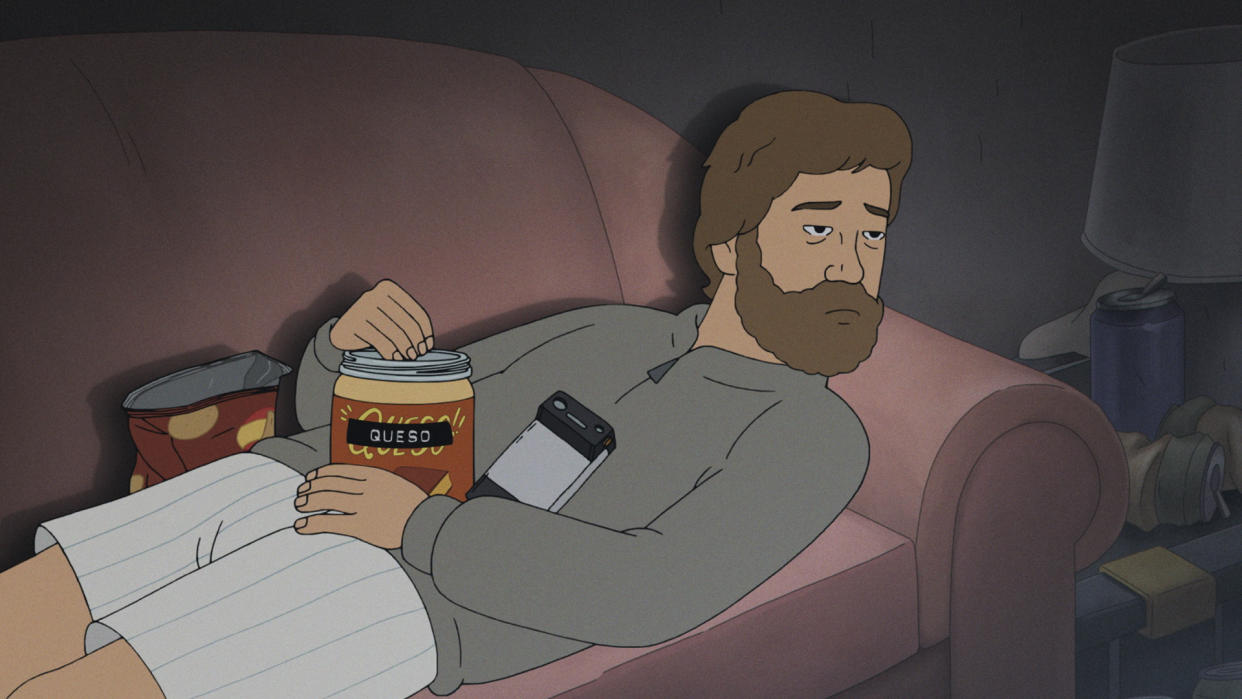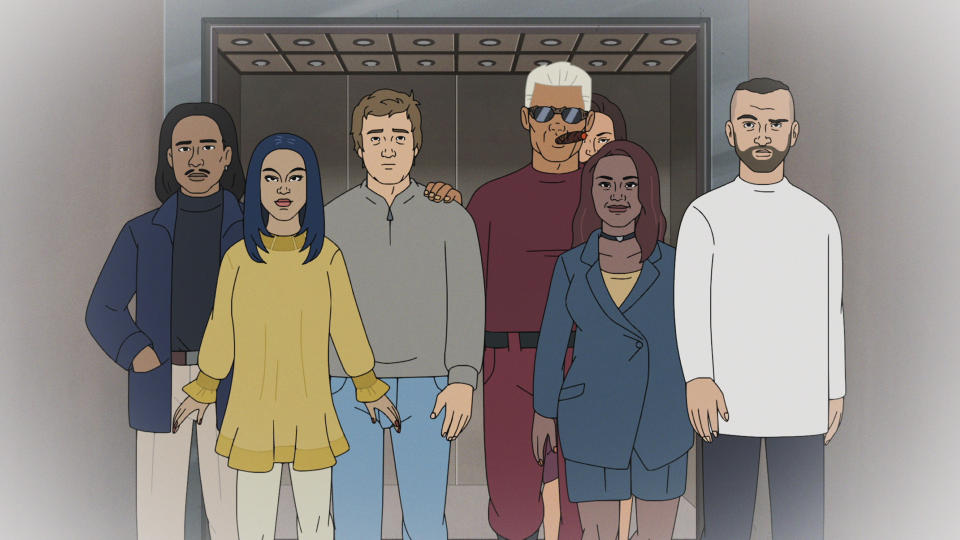‘Fired on Mars’ Restores ’90s Aesthetics and an Anti-Corporate Attitude to Adult Animation

The influence of “The Simpsons” on adult animation is undeniable in terms of tone, format, and look. Today, shows like “Family Guy,” “Rick and Morty,” “BoJack Horseman,” and more carry on the traditions of Matt Groening’s magnum opus, pushing the medium of animation forward while looking back at what came before. In recent years, anime too has planted a foot in the Western animation industry, influencing a bigger focus on serialized storytelling, fluid action, and a cinematic approach to visuals. But when it comes to Max’s new animated series “Fired on Mars,” its influences harken back to a different time, when Mike Judge was making cartoons and grounded realism was key.
“Fired on Mars” is based on a 2016 short of the same name about Jeff Cooper, a graphic designer working for a brazen start-up situated on Mars. Things get complicated when he is unceremoniously fired after relocating to the Red Planet. Like the best Mike Judge shows, it is a poignant exploration of corporate life and late-stage capitalism, showing the realities and absurdities of working for a company that doesn’t care about you and bosses who care more about playing golf using drones than what is happening under their watch. “We both had corporate jobs for much of our lives and there was plenty to say about that,” Sherman explained. “We also came of age in the ’90s where a lot of media was focused on anti-work stories, and that is part of our sensibility, but has also become more relevant than ever.”
More from IndieWire
Billy Eichner Praises 'Sex and the City' for 'More Authentic' and 'Radical' Portrayals of Gay Men
'Abbott Elementary' Teaches Us About Janine Through Her Makeup
“Our characters are meant to look like real people,” co-creator Nick Vokey told IndieWire. “We looked at ‘King of the Hill,’ but also a lot of ’90s anime like ‘Memories,’ especially as you get into the backgrounds and these beautiful places that you can go.” The anime anthology film “Memories,” particularly its segments “Magnetic Rose” (written by Satoshi Kon) and “Stink Bomb,” masterfully blends sci-fi stories with grounded, realistic visuals that gave gravitas to the stories being told. Ghibli was a big influence on the backgrounds, which have a painted, washed-style look. To achieve it, the art team looked at background paintings from ’80s and ’90s animation and limited their color palette. It was a look that co-creator Nate Sherman said was meant to avoid feeling comic book-y but add weight, achieving “a synthesis of West and East.”

At first glance, the premise of “Fired on Mars” could easily become a snappy workplace sitcom about Jeff (voiced by Luke Wilson) trying desperately to gain employment again, even if it means being literally frozen in a box for some vague experiment. “It was challenging to find the tone, to avoid being a joke a minute,” Vokey said. “There’s not really characters saying jokes or one-liners, it’s all character-driven or situation-driven.”
Indeed, while this show is not an animated “The Office,” it still has plenty of humor, a lot of which comes out of the absurd situations Jeff finds himself in — like a job that entails literally being frozen in a box. Early Wes Anderson movies, as well as the work of the Coen brothers and Spike Jonze, helped inspire the tone of “Fired on Mars.” According to Sherman, “All of those movies have beautiful, strange stories with this dry comedy that is woven into everything, and so that was something that I think we were aspiring to as well.”
“Fired on Mars” expands from the original short to include a larger cast of characters, from rogue colonists to disgruntled employees to ambitious scientists. “We wanted to take the essence of the short and expand it in a maximal way,” Vokey explained. “We loved the idea of this world that can get bigger and bigger.” For this, serialization was key, as Sherman and Vokey wanted to evoke a cinematic experience, a “big story that could open up for multiple seasons.”
Nevertheless, “Fired on Mars” retains something rare in many shows of the streaming era: standalone episodes. Each episode is a separate problem to be solved, which still builds into the next chapter of the story. “We needed the episodes, and the season, to also be satisfying on their own terms,” Sherman added. By the time credits roll on the Season 1 finale, Jeff’s story has hit a major milestone that feels complete and satisfactory, making “Fired on Mars” all the more entertaining.
Best of IndieWire
Sign up for Indiewire's Newsletter. For the latest news, follow us on Facebook, Twitter, and Instagram.

 Yahoo News
Yahoo News 
